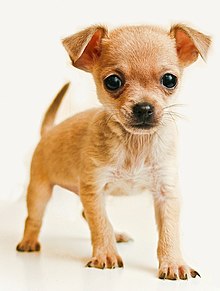 |
| But is it art? |
Long story short: Kuro realized she had been bad and needed to make a Theme Week for March. Freak Weeks are always fun, and this week will be no exception.
That said...it's about time this column covered selective breeding - the first form of biological art known to man. Charles Darwin bred pigeons to help propel his evidence for natural selection, but it is an art when you get right down to it. Even when breeding animals for things like taste, aesthetics always play a part in the breed's development. Prove me wrong.

Selective breeding is exactly what it sounds like: Breeding plants or animals for certain traits. This can be just one trait, like milk production, albinism, or docility. Eventually, many breeds become multi-traited creatures inbred to hell and back. Most modern breeds consist of physical build, personality, color, and, of course, a solid name and line. It helps if these are registered in pedigree books.
Not all captive bred animals qualify as breeds. The validity of a breed depends, first, on whether the animal can be considered domesticated or not. That in itself is a very hard thing to prove; definitions of domestication vary between "can be bred in captivity" to "must have a social structure at which humans can be considered the alpha." One extreme allows lions; the other excludes white mice bar brainwashing.
 |
| Are they still domesticated if they try to take us over? |
With the vagueness of a breed in mind, many true breeds are severely inbred. This leads to defects like crossed eyes (which have been bred out of Siamese cats), hip dysplasia (in small dogs), and usually an overall shortened lifespan in comparison to their wild/not inbred counterparts. Breeds are not necessarily superior to mutts. If, however, a certain trait is desirable enough, it may get bred in...
 |
| Bred for size and little else. Shame they were covered already. |
Nature breeds creatures to survive. Humans breed them to be pretty (or edible). We shall see how these differences pan out in Freak Week 3.5 - in which we will cover things that may or may not be actual breeds. Look forward to it!

Correction big dogs get hip dysplasia, small dogs technically can but it's not common. Instead they get luxating patellas, which is a fancy way of sayiing their kneecaps pop off when they walk. Next time you see a small dog that skips a step or looks like it's skipping instead of walking just remember, it's not cute, it's uncomfortable if not outright painful.
ReplyDelete